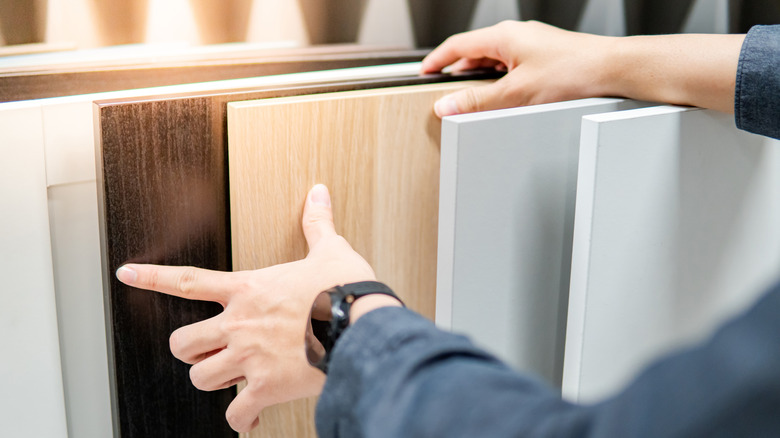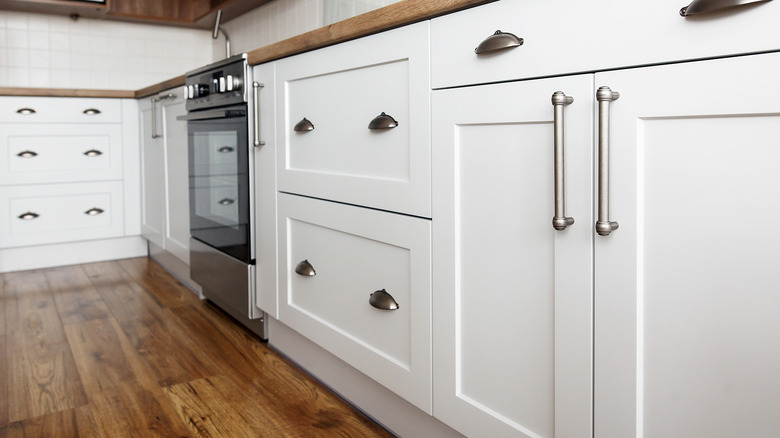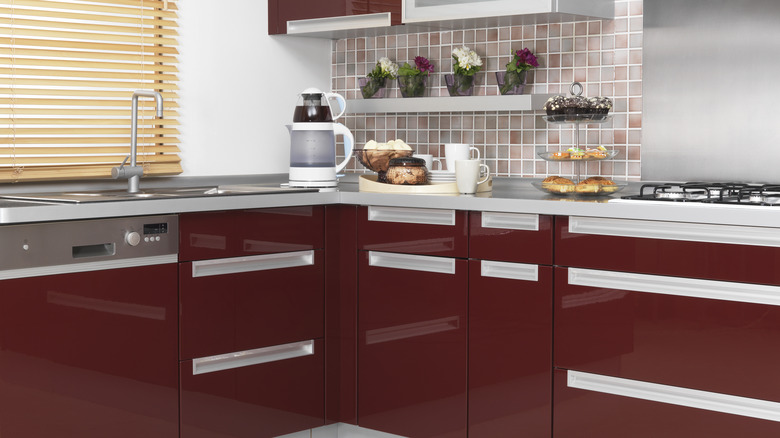What Cabinet Colors And Materials Are Best For A Rental Property? What Our Real Estate Expert Thinks
Designing your rental property kitchen can be tricky. On the one hand, you want it to be attractive so your listing gets plenty of bites and your tenants enjoy using it. There isn't much joy in whipping up dinners in a dated or unfashionable space, and it can eventually make good tenants look for nicer accommodations. But on the other hand, the design needs to be budget-friendly and durable. Renters don't tend to be as careful with their temporary dwellings as they would with a home they own, so you want to make sure it can stand up to years of consistent wear and tear. So, how do you walk the line between the two? House Digest exclusively interviewed Ryan Fitzgerald, founder of Raleigh Realty, to find out more.
According to the real estate expert, the best thing you can do is to focus on painted cabinets that come in light, neutral colors. White kitchen designs never go out of style, so you can have the cabinets for years to come without them feeling dated or like they need a facelift. Choosing a painted material also helps you update them or touch them up without hiring an artisan to refinish them, making future renovations between tenants more cost-effective. Here is a deeper look into what our real estate expert has to say.
Neutral, painted cabinets are best
You want to focus on installing a timeless design that will be easy to renovate or fix whenever a tenant moves out, and the listing goes back on the market. Because of this, neutral-colored, painted cabinets are best. Much like how listing agents recommend sellers repaint their rooms in neutral hues to appeal to a wider net of buyers, designing a neutral kitchen will hook in more renters. "For rental properties, light neutral colors like white or light grays for cabinets will bring the highest value, as they help the kitchen look clean and bright to appeal to most tenants," Fitzgerald tells House Digest. These colors appeal because they make it easier for potential renters to envision themselves in the space. Since it's so neutral, they can easily bring in their own style without making significant changes.
As for the cabinet material, Fitzgerald recommends going with a painted rather than stained option. "Solid wood cabinets are a long-lasting choice, though painted is generally better than stained for easy future updates without a full refinishing," he says. As for the design, focus on timeless cabinet doors that won't feel dated in five years' time. "Properties being sold have more flexibility to choose more on-trend styles and colors that may particularly appeal to buyer design tastes at that time. Overall, classic shaker cabinetry remains a safe choice for both markets," he explains.
What you should avoid for a rental property kitchen
Now that you know what a safe bet is, let's take a closer look at what you should avoid and why. First, you want to skip anything that feels like a mirco-trend or will be hard to upkeep. "Colors and designs that are too trendy or high-maintenance should be avoided," Fitzgerald warns. While pink kitchen cabinets might be currently trending thanks to HGTV's David Bromstad, they will feel old-fashioned rather than exciting in two years' time. It's also unwise to pick a high-maintenance design — such as glossy finishes that will show every scratch or wood-carved details with loads of nooks to clean — since renters likely won't take the time to clean or upkeep them properly.
You also want to avoid going to the opposite end of the spectrum and investing in something dated or low-budget in order to save on your bottom line. This will only create more problems down the road. "The worst cabinet colors and materials from a value perspective would be dark colors that date a space or very cheap low-quality laminates that won't hold up well over time under heavy tenant use," Fitzgerald says. Instead, stick to light-hued, painted cabinets that can last for decades to come. "Rental properties should favor neutral, durable materials and classic, low-maintenance designs that will last through multiple tenancies without needing constant updating."


